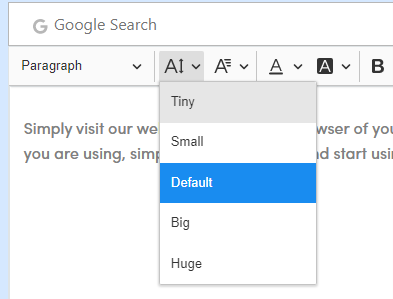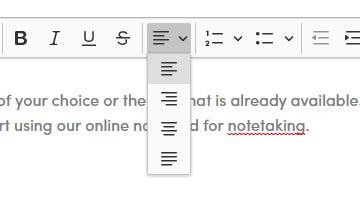Some say the key to keeping any social gathering cordial is not to talk about politics or religion. I think that’s probably very true. And I also think: Well, thank God at least there’s no religion in my new book!
My novel Campaign Widows—about a group of friends left behind in Washington, DC, when their significant others are out on the campaign trail—was sparked by my own experience as a “campaign widow.”
Over the years, my husband, a longtime Senate staffer on Capitol Hill, has shipped out to various cities to work on campaigns. I didn’t know anything about this world when he joined his first campaign a million years ago and moved to New Orleans to help reelect a Louisiana senator. This new development in our relationship got me thinking that what seemed so exotic to me—him uprooting to a place he’d never been, leaving me behind for several months—was just business as usual for so many folks in DC.
I mention this as a long way of saying the idea kicked around in my head for ages—while I wrote other books, worked on other projects—before I finally got around to starting the manuscript… in January of 2016.
Yep, 2016. So while our own bizarre real-life election—stranger than anything in fiction—played out, I toiled, trying to keep my book as far-removed from reality as possible. Between starting the book and its publication now, only two years later, the entire political landscape, the way we talk about politics, the emotions it sparks, everything about how we engage with the political world, feels like it’s changed.
But we can’t let all that keep us from writing about politics in fiction, can we? There’s a way to do it, and here’s my best advice for giving it a shot:
Tip #1: Figure out what your book is (really) about.
The funny thing about my novel is that I never really considered it to be about politics at all. In my mind it’s always been about friendship: The political aspect is just the backdrop for the story of an unlikely group of friends bonded by the shared experience of being left behind.
Even a work of fiction that might address politics more directly than mine is still, at heart, going to be about people, relationships, friends or enemies. Books about politics can still be universal, so always keep that emotional core in mind as you write.
Tip #2: Be clear about what purpose politics will serve in your book.
Are you writing 1984 or Primary Colors or The Handmaid’s Tale or Election? What is your novel’s attitude toward the political world? I knew from the start that I wasn’t writing satire or something dark or dystopian. I wanted my book to be fun and escapist, and the campaign in my book to be its own zany character. I wanted the campaign, essentially, to be the villain: something so wild and over-the-top that it throws all the other characters’ lives into disarray.
Once I sorted out this dynamic, I realized I could get away with a lot. For instance, I didn’t need to identify any political parties, and no one in my book even needed to talk about pesky things like the issues. I was more concerned with the energy and spirit of the candidates in my election and about contrasting their different approaches, attitudes and personalities.
Tip #3: You don’t have to chase the headlines (unless you really want to).
Here’s where my advice gets very Choose Your Own Adventure:
- If you’re not writing about what’s happening in the news right now: skip to Tip #4
- If you are writing about the news but you’re extremely gutsy and/or you’re Sean Penn (i.e.: Bob Honey Who Just Do Stuff): skip to Tip #5
- If you are writing about the news and you’re moderately gutsy, continue reading Tip #3:
I probably don’t have to tell you this option isn’t the easiest, but I admire your fortitude! The political world moves at lightning speed (especially these days!) and writing about what’s in the news can make things extra sticky, so you’ll have to buckle up and take a deep breath if you’re tackling real-life.
Ask yourself these questions: What will be my balance of fact and fiction? How wedded am I to the headlines? How long a leash will I allow myself when fictionalizing it all? It might help to set some parameters around certain events, a time period, one character, one aspect of the bigger picture so you don’t feel like the story is forever changing (because it is forever changing and I imagine overwhelming to try to write about while it’s unfolding in real-time). No matter how much you’re incorporating reality and which lens you’re viewing it through, remember your novel is still going to come down to that winning ticket of strong characters and killer story. Now jump to the all-important Tip #5!
Tip #4: Make your characters and events as different from the news as possible.
I wanted my book to feel escapist so I knew from the get-go that I wasn’t going to model the events of my novel or my characters or their appearances or their actions on anyone or anything actually going on at the time. I wanted the freedom to create everything from scratch. Of course, that doesn’t mean that readers won’t try to draw parallels anyway. Which brings us to, the most vital…
Tip #5: Accept that you’re not going to please everyone.
I am not a gutsy person. (Seriously, I don’t even ride rollercoasters.) So having a book set in the political world and hitting shelves in this particular… climate… is probably the riskiest thing I’ve ever done. Even if you’ve gone the route of Tip #4, like I did, readers are always going to draw comparisons to real-life, who could blame them? And some may even discount a novel for political reasons alone. In these contentious days, with emotions running high and the world of politics as divisive as ever, it can feel plenty intimidating to center a novel in this circus. Sure.
But, here’s the thing: No matter what you write about, there will always be someone who doesn’t love it. That’s just how it goes. So be fearless, write the book you want to write, and make it the best you can.
If your book has your vote and you believe in it, then it will find its staunch supporters.
A former “campaign widow,” Aimee Agresti is the author of the Gilded Wings trilogy for young adults. She’s also an entertainment journalist—who’s interviewed everyone from George Clooney to Angelina Jolie—and a former staff writer for Us Weekly, where she penned the coffee table book Inside Hollywood and continues to contribute to the magazine’s series of stand-alone collector’s issues on stars ranging from Taylor Swift to Princess Diana. In addition to Us, her work has appeared in People, Premiere, DC magazine, Capitol File, the Washington Post, Washingtonian, the Washington City Paper, Boston magazine, Women’s Health and the New York Observer. Aimee has made countless TV and radio appearances dishing about celebrities on the likes of Access Hollywood, Entertainment Tonight, E!, The Insider, Extra, VH1, MSNBC, Fox News Channel and Headline News. She graduated from Northwestern University with a degree in journalism and lives with her husband and two sons in the Washington, DC, area.
Credit: WriterDigest


.webp)










